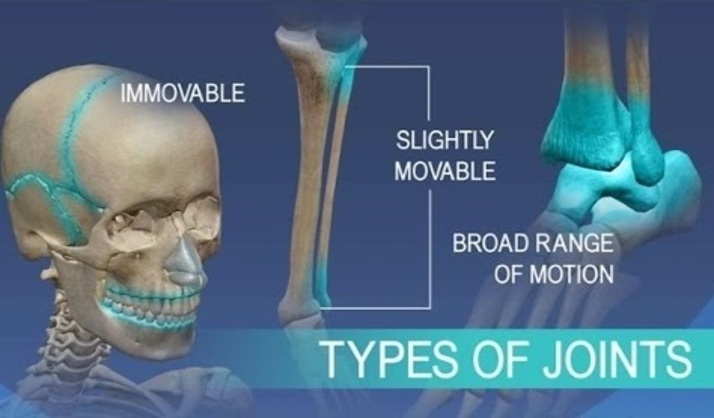Types of Joints
Joints are classified into three major groups or types using structural features or potentials for movement as distinguishing criteria.
For the athletic trainer, a system of joint classification using a degree of movement is the more functional and appropriate method. On this basis, three joint classes can be identified.
That is Synarthroses or immovable joint, Amphiarthroses or slightly movable joint and Diarthrosis or freely.
If structural criteria are used for classification, these three joint classes are called in the same order fibrous, cartilaginous and synovial
SYNARTHROSES: There are three types of immovable joint
- Syndesmosis
Syndesmosis characterized by a dense fibrous membrane that binds the articulate bone surface very closely and tightens to each other.
The articulation between the distal ends of the tibia and fibula is a good example of the syndesmosis.
-
Sutures
True sutures are found only in the skull. As a group, sutures are not characterized by the substantial fibrous membrane or dense ligament seen in the syndesmosis.
Instead, the adjourned bone margin is united into a rigid/movable joint.
- Gomphosis
A gomphosis is a synarthrosis of a fibrous joint in which a coined peg or projection is fixed into a socket.
Articulation between the root of the teeth and socket of the jawbones are the only example of this type of joint in the body. The fibrous is called the periodontal membrane.
AMPHIARTHROSIS or slightly movable joint has a part of hyaline or fibrocartilage located between the joining bony surfaces. There are two types of amphiarthrosis.
-
Synchondrosis
In this type of joint, apart if hyaline cartilage joins one bone to another. Examples of synchondrosis are the joint between rib pairs and the sternum.
- Diarthrosis
Diarthrosis or freely movable joints are often referred to as synovial joints because they’re characterized by the presence of a closed activity called synovia or joint cavity between the bones.
As a group, the diarthrosis or synovial joint includes by far the majority of the body articulation.
Because they’re the most mobile of the three types of joint, they are functionally the most important.
They also have the most complex structure and are most vulnerable to athletic injuries. Examples are ball and socket, hinge, and gliding.
